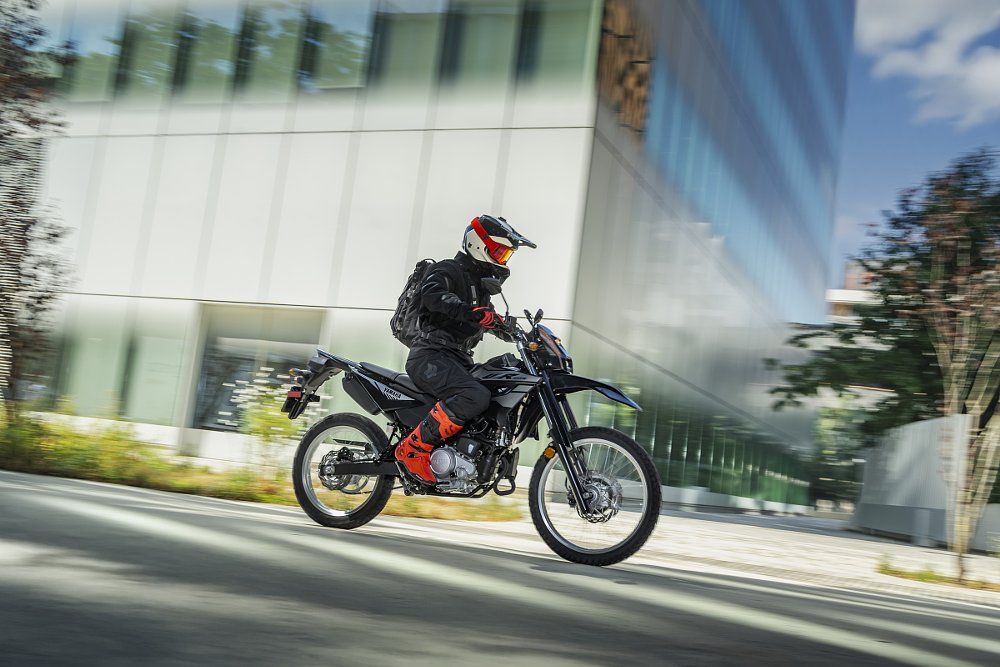Whether we're talking about 1980s U.S. economic theories or 2020s motorcycle features, the promised trickle-down benefits don't always reach the little guys.
Common Tread readers often lament that to get some of the features they want — whether that's uprated suspension, cruise control, more advanced traction control, switchable ABS — they have to buy a bigger, more expensive motorcycle than they really want. Isn't the new technology supposed to trickle down to those of us who are shopping at a lower price point or maybe just prefer a lighter, smaller machine?
I've actually seen some encouraging movement on this front out of the EICMA show and surrounding releases of new models. It's not exactly an opening of the flood gates, but hey, at this point I'll happily welcome the trickle.
Variable valve timing, quickshifters, messages from your pit crew
One of the new models just unveiled is the Yamaha WR125R. What's so special about an economical, lightweight dual-sport with non-adjustable suspension? Well, I may be overlooking something, but I think this is the smallest, least expensive motorcycle you can buy that has variable valve timing.

The liquid-cooled single in the WR125R uses two cam profiles for the intake valves, one optimized for high rpm and one for low rpm. This provides a broader, more usable spread of power. It's not new technology. A similar system adjusts intake valve timing and stroke on the BMW R 1300 RT i recently tested extensively. But that BMW is a flagship touring motorcycle that costs $31,675 as tested. MSRP on the little Yamaha dual-sport is $3,999. And it's easy to make an argument that a 125 cc single needs help more than a 1,300 cc twin.

Quickshifters are another feature some riders really covet. One new model we saw at EICMA was the Aprilia RS 457 GP Replica. It's clearly aimed straight at young, new riders in Europe who are still riding with A2 restricted licenses but want to look like MotoGP stars. So the GP Replica has livery intended to resemble the Aprilia RS-GP MotoGP bike, complete with sponsor graphics. But it also comes with a standard quickshifter, because don't those young riders also want to feel like GP stars?
Another example is the gradual spread of Honda's E-Clutch system, which is standard equipment on the CBR650R and CB650R in the U.S. market. At EICMA, Honda announced it will be available as an option on several other models, including the accessible 500 line.
Then take a look at the forthcoming BMW F 450 GS Dustin wrote about earlier this week and compare its features to the BMW G 310 GS I was riding around earlier this year. The G 310 GS had a small, LCD display. ABS was basically the limit of electronic rider aids. The F 450 GS will come with a 6.5-inch full-color TFT display, multiple ride modes, traction control, and a centrifugal clutch that lets the rider override it and operate the clutch manually when desired. And though the F 450 GS doesn't bring MotoGP dreams of glory to mind, it also has a quickshifter, like the similarly sized Aprilia.

For real MotoGP dreams, there are those flagship sport bikes that have all the electronic rider aids you can imagine, to help you control their power. Most of those rider aids don't trickle down to the more affordably priced middleweight sport bikes. But Yamaha also did some work on its YZF-R7 this year, and beyond a freshened look, they layered on quite a bit of tech features you'd more expect to see on a YZF-R1: There's a revised quickshifter, naturally, but also a new six-axis inertial measurement unit that enables lean-angle-sensitive traction control (four levels and off), plus Slide Control System (SCS), Lift Control System (LIF), lean-sensitive braking, adjustable engine braking, Back Slip Regulator (BSR), and Launch Control System (LC). For real dreams of MotoGP glory, you also get compatibility with the Y-TRAC Rev App, which allows your pit crew to send a message to you that flashes on your screen during your track-day session and also lets you download data to analyze in the pits.
All this tech has now moved down the food chain to the R7, which still lists at four figures: $9,399 in blue or black or $9,699 in the 70th Anniversary colors.
Now if only I had a pit crew.









